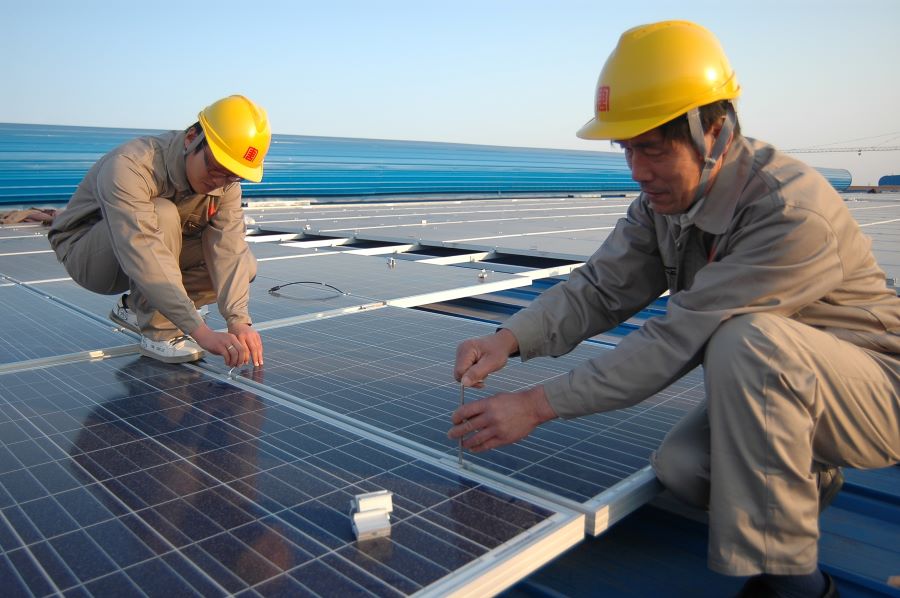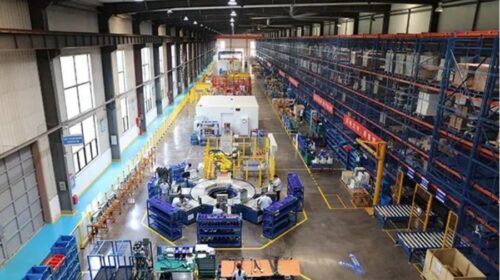Signs of Bursting Polysilicon Bubble Cast Cloud Over Daqo New Energy

Domestic customer Longi aggressively cut its prices for the key material used to make solar panels for first time in a year-and-a-half as supply glut looms
- Shares of Daqo New Energy have dropped 40% over the last month amid signs that a two-year surge in polysilicon prices has peaked
- Company reported its revenue surged nearly fivefold year-on-year in the third quarter on quadrupling of polysilicon prices over that period
By Doug Young
Solar stocks are in the headlines as we approach this year’s winter solstice, with word that a long-building bubble for polysilicon – the main ingredient used to make solar panels – is on the cusp of bursting. This particular news isn’t unexpected, as many have been predicting it for quite a while following a spectacular run-up over the last two years.
But you might think it was coming somewhat out of the blue based on the stock performance for Daqo New Energy (DQ.US), one of China’s leading makers of the material, which has lost a quarter of its value over the past week and is down 40% over the last month.
The latest catalyst for the selloff appears to be media reports that one of the company’s customers, China-listed Longi Green Energy Technology Co. Ltd. (601012.SH), has reduced prices for its polysilicon wafers for the first time in a year and a half, according to Caixin Global. Specifically, Longi on Nov. 30 cut prices for its 182-mm, 166-mm and 159-mm wafers by between 7.2% and 9.8%, Caixin reported, citing the company’s website.
Analysts quoted in the report said Longi was trying to get ahead of the crowd by cutting its prices first, and that more reductions were likely to follow. The Chinese website InfoLink, which tracks polysilicon prices, said prices for various different polysilicon wafer sizes were down anywhere from 3.1% to 9.7% last week, with more declines expected for the week ahead.
That news may have been a major factor behind a 10% drop for Daqo’s stock on Friday. Like many of its peers, Daqo has rushed to build new capacity to cater to exploding demand for solar cells as countries rush to install more clean energy. The trend has been helped by the fact that solar power is now competitive for the first time with traditional coal-fired power plants, meaning government subsidies are no longer required for solar plants to be commercially viable.
But in typical fashion, the building of all that new capacity is helping to burst the current polysilicon price bubble.
Daqo is currently building one such major new facility, called “phase 4B” in company materials, which it discussed on its earnings call after the release of its latest quarterly results in late October. That facility will have capacity to make about 35,000 metric tons of polysilicon annually, representing an increase of nearly 50% from Daqo’s current capacity.
On the call company officials said construction of the facility should be complete by the end of this year and it should be able to produce at full capacity in the first quarter of next year. Of course, the big question will become where exactly prices will be by next year’s first quarter when all that new production comes on stream. Having spent so much money on the facility, Daqo will be under pressure to use all the capacity – even if prices are falling.
Big Run-Up
We’ll spend the second half of this article looking at Daqo’s latest earnings, which show just how dramatically polysilicon prices have risen over the last year, as well as comments the company made on where it sees prices headed next year.
Here we should note that these comments were all made over a month ago, so they could already be outdated. But as we pointed out at the outset, the cresting of polysilicon prices in this year’s fourth quarter has been forecast for quite a while, so one could argue that the latest signs on falling prices are right on schedule.
No matter how you slice it, Daqo’s stock looks quite undervalued following the latest selloff, perhaps because it’s adding so much new capacity just as the market peaks. Its shares now trade at a forward price-to-earnings (P/E) ratio of just 3.4, compared with a much higher 30 for Longi. German giant Wacker Chemie (WCH.DE) trades at a forward P/E of 14, while Daqo’s Chinese domestic peer Xinte Energy (1799.HK) trades at a trailing P/E of 9.
Daqo certainly can’t be blamed for failing to tell investors about the looming headwinds for polysilicon, as the company has been warning about this downturn for quite some time. In its latest results the company said the average price it charged for its polysilicon in the third quarter was $27.55, up 32% from the average price of $20.81 in the second quarter and representing a staggering tripling of prices from just a year earlier.
The website PVinsights said polysilicon was selling for as much as $36.80 last week on the spot market, and as little as $22, indicating large volatility at the moment. Daqo CEO Zhang Longgen said on the call the company expects polysilicon prices to stay in the $30 to $36 range per kilogram in the first half of next year, and then hover around $30 in the second half of the year.
Those levels would still represent a huge increase over just a year ago, though it’s possible the latest aggressive price cuts by Longi might indicate a looming war that could see producers cut prices more aggressively in order to maintain their market share.
Daqo and its peers certainly profited handsomely from the boom. The company reported its revenue jumped to $585.8 million in the third quarter, representing a 33% rise quarter-on-quarter and a whopping increase of nearly five times from year-ago levels. Its profit rose by a slower but still healthy 26% quarter-on-quarter to $292.3 million.
Not surprisingly, the roughly dozen analysts polled by Yahoo Finance see Daqo’s profit stagnating next year at 2021 levels. Revenue is expected to rise by a modest 13% – far less than the new capacity the company is adding. Given all the new production coming on stream and the relatively aggressive nature of Longi’s price cuts, it wouldn’t come as a huge surprise if analysts end up downgrading their forecasts for Daqo as well as the broader sector depending on pricing trends over the next few weeks.
To subscribe to Bamboo Works free weekly newsletter, click here






